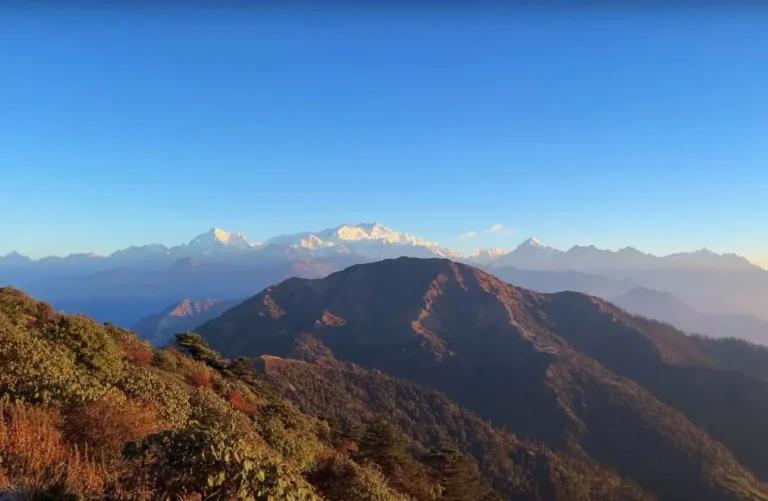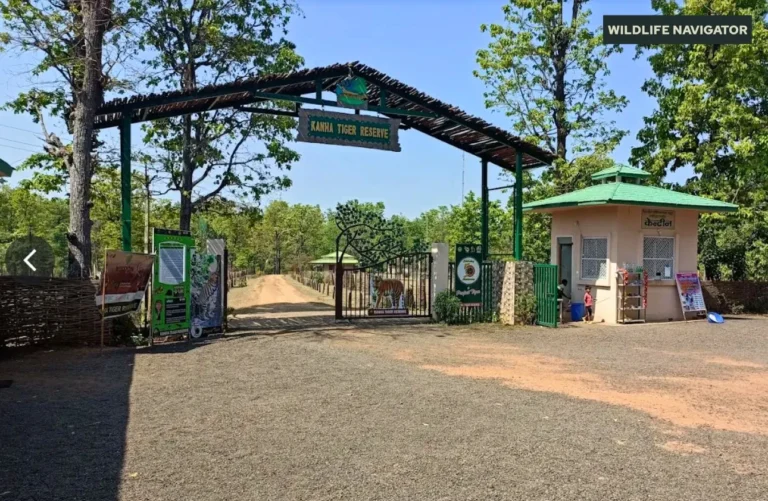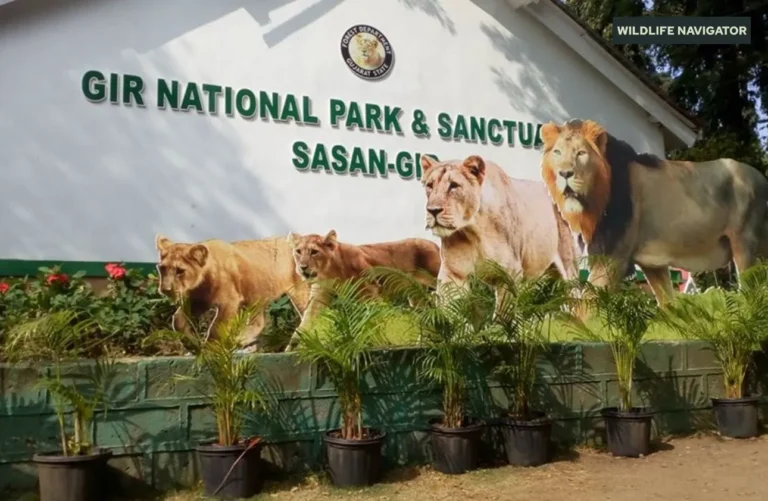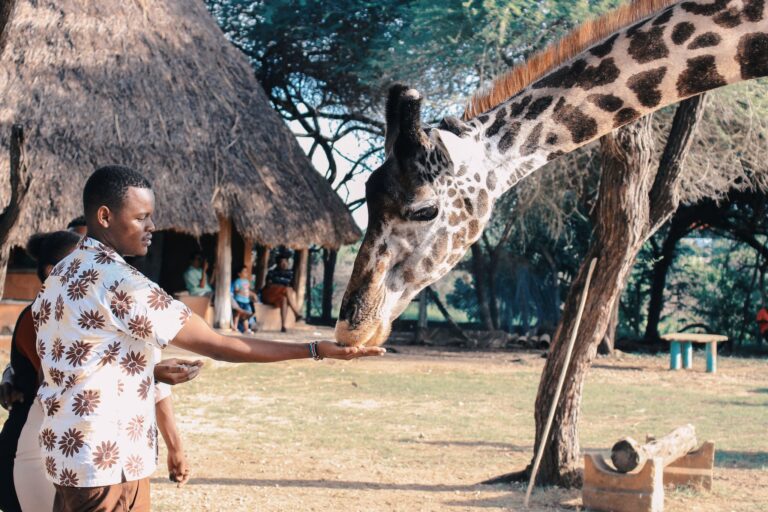Valmiki Tiger Reserve | Valmiki National Park – Complete Travel & Wildlife Guide
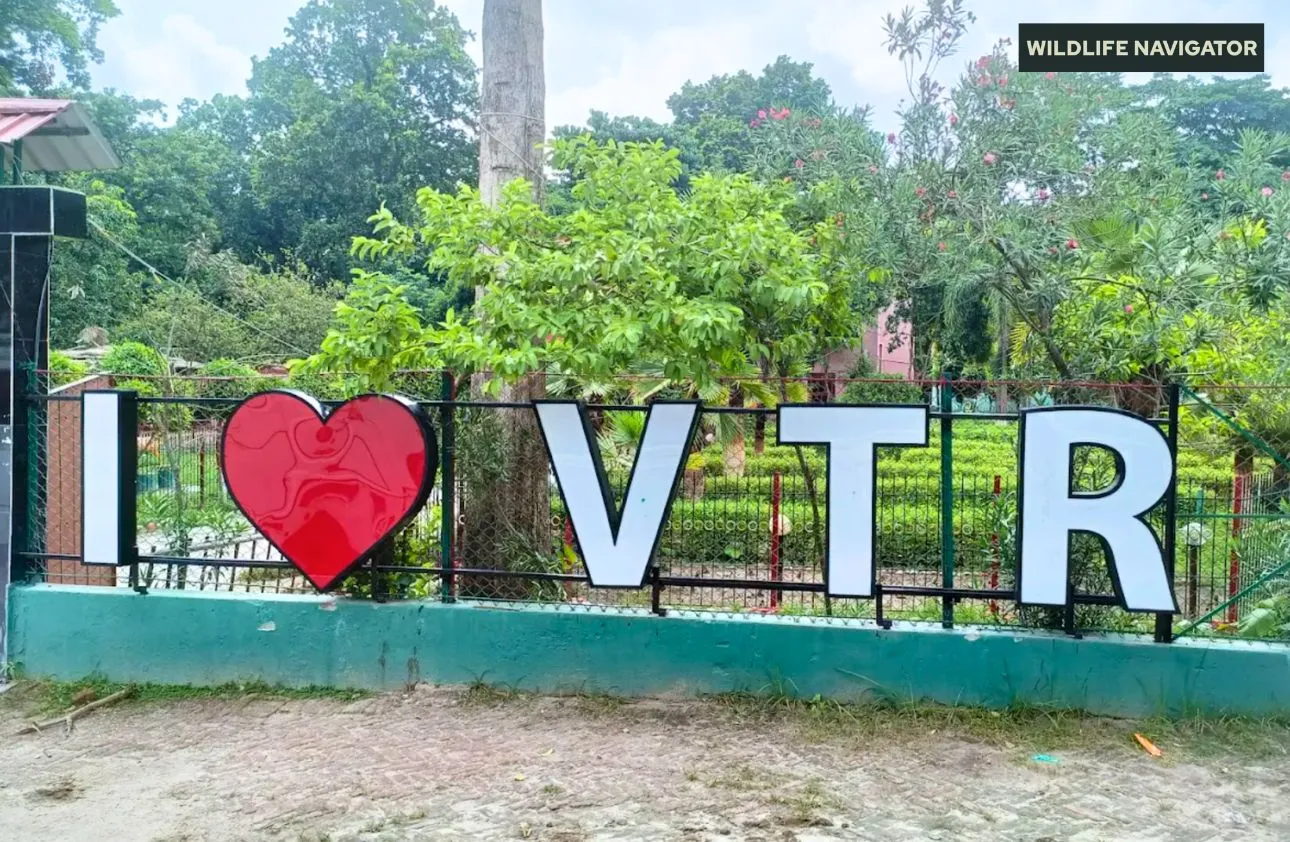
Valmiki Tiger Reserve is one of India’s most underrated wildlife destinations, nestled in the northwestern corner of Bihar, along the Indo-Nepal border. Spread across lush forests, grasslands, and riverine landscapes, it is not only Bihar’s only Tiger Reserve but also its only National Park, making it a truly unique wilderness area. Known officially as Valmiki National Park on a broader level, this pristine habitat is a part of the Himalayan Terai eco-region and plays a crucial role in conserving endangered species like the Royal Bengal Tiger.
The reserve derives its name from the nearby town of Valmikinagar, which in turn is associated with the revered sage Valmiki, the author of the great epic Ramayana. Steeped in both natural beauty and cultural significance, the park is a blend of biodiversity, history, and spirituality.
Despite its importance, Valmiki Tiger Reserve remains relatively less explored compared to popular parks like Jim Corbett or Ranthambore, which adds to its charm. For wildlife enthusiasts, it offers an offbeat experience—unspoiled forests, thriving wildlife, and the chance to spot elusive big cats without the usual tourist rush. For travellers seeking both adventure and peace, this hidden gem in Bihar is nothing short of spectacular.
History, Geography & Landscape
History
Valmiki Tiger Reserve has a rich past that intertwines with both natural and cultural heritage. Originally, this forested land was the property of the Bettiah Raj and Ramnagar Raj estates during the colonial era. Excessive hunting, logging, and shifting cultivation once threatened its delicate ecosystem. Recognising its ecological importance, the Government of Bihar took steps to conserve the area, and in 1978 it was declared a Wildlife Sanctuary.
Later, in 1989, it was upgraded to Valmiki National Park under the provisions of the Wildlife Protection Act of 1972. The following year, in 1990, it was brought under Project Tiger, becoming Bihar’s only Tiger Reserve. This dual recognition makes it both a National Park and a Tiger Reserve, giving it the highest protection status in India.
Geography
The park is located in West Champaran district of Bihar, right along the Indo-Nepal border, and is bounded by:
- North: Nepal’s Chitwan National Park, which together with Valmiki forms a vital transboundary wildlife corridor for tigers and elephants.
- East: River Gandak and Someshwar hills.
- South: Agricultural lands of Bihar’s Terai plains.
- West: Uttar Pradesh forests and the protected area belt.
Its geographical location makes it a crucial part of the Terai Arc Landscape, a mosaic of grasslands, riverine forests, and wetlands spread across India and Nepal.
Landscape
The terrain of Valmiki National Park is dramatic and diverse:
- Himalayan Foothills: The Someshwar and Dun ranges create a hilly backdrop.
- Rivers & Streams: The Gandak, Pandai, and Masan rivers crisscross the park, forming fertile valleys and wetlands.
- Forests & Grasslands: Dense sal forests cover most of the reserve, interspersed with cane brakes and open grasslands that are perfect for herbivores.
- Altitude: Ranges from about 125 meters to 900 meters, giving the park a varied climate and vegetation.
This mosaic of hills, plains, rivers, and forests makes Valmiki Tiger Reserve an ecological treasure. Its location in the Indo-Nepal Terai region ensures that it supports a rich diversity of flora and fauna, while also playing a vital role in the survival of species that move across the borders.
Flora & Fauna
One of the biggest attractions of Valmiki Tiger Reserve is its incredible biodiversity. The reserve is a part of the Indo-Gangetic and Himalayan Terai eco-region, which makes it rich in both plant and animal life. With its mix of sal forests, grasslands, wetlands, and riverine ecosystems, it supports everything from apex predators to migratory birds.
Flora
The vegetation here is largely moist deciduous forest, dominated by sal (Shorea robusta), which forms dense canopies and serves as the backbone of the park’s ecosystem. Other important tree species include:
- Asan (Terminalia tomentosa)
- Khair (Acacia catechu)
- Sissoo (Dalbergia sissoo)
- Cane and bamboo brakes
- Jamun, Mahua, and Banyan in riverine patches
In addition, the wetlands and grasslands along rivers like Gandak and Masan are rich in aquatic vegetation and tall grasses such as elephant grass, which provide ideal shelter for herbivores like deer and gaur.
Fauna
Big Cats
- Royal Bengal Tiger: The pride of Valmiki, the tiger population here has been rising steadily under Project Tiger. The dense forests and river valleys provide excellent tiger habitats.
- Leopard: More elusive but frequently spotted, often inhabiting the hilly and rocky areas of the reserve.
Herbivores
- Deer species: Chital (spotted deer), sambar, and barking deer are abundant.
- Nilgai (blue bull) and wild boar roam the grasslands.
- Indian bison (gaur), though rarer, can also be seen.
Other Mammals
- Sloth bear, striped hyena, and wild dog (dhole) add to the carnivore diversity.
- Rhesus macaque and langurs are commonly spotted primates.
- Smaller mammals include porcupines, civets, and mongoose.
Birds
Valmiki is a paradise for bird lovers, with more than 250 recorded bird species. Some highlights include:
- Peafowl, jungle fowl, and hornbills.
- Raptors like crested serpent eagle, white-eyed buzzard, and fishing eagle.
- Wetland birds such as kingfishers, storks, and herons.
- Migratory species in winter, adding seasonal charm.
Reptiles & Amphibians
- Mugger crocodile thrives in the Gandak River and breeding centres.
- Indian python, monitor lizards, and king cobra are found in the reserve.
- Frogs, toads, and marsh-dwelling species make up the amphibian population.
Conservation Importance
The presence of apex predators like the tiger, along with elephants moving in from neighbouring Nepal, highlights the ecological significance of Valmiki Tiger Reserve. Its role as a wildlife corridor between India and Nepal ensures genetic diversity and long-term survival of many species.
Safari in Valmiki Tiger Reserve
A visit to Valmiki Tiger Reserve (Valmiki National Park) is incomplete without experiencing a wildlife safari. Unlike the overcrowded parks of central and northern India, safaris here feel more intimate, peaceful, and adventurous. You get to drive through untouched forests, cross streams, and explore grasslands with the constant thrill of spotting tigers, leopards, or elephants in their natural habitat.
Safari Zones
Valmiki Tiger Reserve is divided into different ecotourism zones, each offering a unique landscape and wildlife experience:
- Gandak Barrage Zone (Valmikinagar) – Famous for scenic views of the Gandak River, crocodile sightings, and migratory birds.
- Manguraha Zone – Known for dense sal forests and higher chances of spotting herbivores like sambar, chital, and nilgai.
- Ramnagar Zone – A mixed habitat with grasslands and streams, good for birdwatching.
- Madanpur Zone – One of the most scenic zones, offering hilly terrain and diverse wildlife.
Each safari zone has designated entry gates managed by the Bihar Forest Department, ensuring sustainable tourism and minimal disturbance to the wildlife.
Safari Types
- Jeep Safari: The most popular option for exploring different safari zones. Each jeep accommodates 6 tourists plus a guide.
- Elephant Safari (seasonal and limited): A unique way to explore the forest interiors, particularly for spotting tigers and rhinos in buffer areas.
- Walking Nature Trails: Guided treks in buffer regions for birdwatching, butterfly spotting, and learning about local flora.
Safari Timings
Like most Indian tiger reserves, safaris are conducted twice a day:
- Morning Safari: 6:00 AM – 10:00 AM (timings may vary with season)
- Evening Safari: 2:00 PM – 6:00 PM
Winter months usually have slightly delayed morning entries due to fog.
Safari Charges
The charges for safari at Valmiki Tiger Reserve are quite affordable compared to other reserves. Approximate tariff (subject to change by the Forest Department):
- Jeep Safari (per round): ₹2,000 – ₹2,500 per vehicle (excluding entry & guide fees).
- Entry Fee: Around ₹100 per Indian tourist and ₹600 per foreign tourist.
- Guide Fee: Approx. ₹400 per safari.
- Vehicle Entry Fee: Around ₹300 per jeep.
This makes Valmiki one of the most budget-friendly tiger reserves in India for safari enthusiasts.
Safari Booking
- Bookings are managed by the Bihar Forest Department.
- Online booking portals are being developed, but most bookings are currently handled at Valmikinagar Forest Office or via eco-tourism websites approved by the government.
- During peak season (November–April), advance booking is recommended.
Safari Experience Highlights
- High chance of spotting tigers, leopards, sloth bears, and wild elephants in buffer zones.
- Excellent for birdwatchers, especially during winter migratory season.
- Crocodile sightings at Gandak Barrage and breeding centres.
- Less crowd = more immersive jungle experience.
Accommodation Options
Unlike the more commercialised tiger reserves of India, Valmiki Tiger Reserve offers a mix of eco-friendly stays, forest rest houses, and basic lodges, making the experience more authentic and closer to nature. While luxury resorts are limited, the simplicity of the accommodation here adds to the charm of an offbeat jungle adventure.
1. Forest Rest Houses
The Bihar Forest Department operates several Forest Rest Houses (FRHs) within the reserve. These are best for travellers who want to stay right in the heart of the forest.
- Location: Valmikinagar, Naurangia Done, Gobardhana, and Manguraha zones.
- Facilities: Basic but clean rooms, attached bathrooms, solar lighting, and meal services.
- Experience: Staying in FRHs gives you the chance to hear the jungle at night—crickets, calls of owls, and maybe even a tiger’s roar in the distance.
2. Eco Huts & Eco Cottages
In recent years, the Forest Department has developed eco-huts and cottages to promote eco-tourism and involve local communities.
- Naurangia Done Eco Huts: Run in collaboration with local Tharu tribes, offering a blend of culture and nature.
- Manguraha Eco Huts: Situated amidst sal forests, ideal for wildlife enthusiasts.
- Valmikinagar Cottages: Near the Gandak Barrage, suitable for families and budget travellers.
These eco-stays often include home-cooked food, traditional hospitality, and cultural programs, making them unique compared to standard hotels.
3. Hotels & Guesthouses in Valmikinagar
For those who prefer slightly more comfort, there are a few budget hotels and guesthouses in Valmikinagar town, located close to the entry gate.
- Facilities: Comfortable rooms, electricity, Wi-Fi (limited), and restaurants serving North Indian and local cuisine.
- Best For: Families and tourists who want access to town facilities along with safari experiences.
4. Nearby Options in Bettiah
If you don’t find suitable accommodation near the park, Bettiah town (around 60 km away) offers more hotels with better amenities. Bettiah is a convenient base for travellers who prefer staying in town and commuting to the reserve for safaris.
5. Things to Know About Staying in Valmiki Tiger Reserve
- Book forest stays well in advance during peak season (November–April).
- Do not expect luxury—accommodations are mostly basic and eco-friendly.
- Carry essentials like mosquito repellent, flashlights, and warm clothes in winter.
- Staying in eco-huts or FRHs directly supports conservation and local livelihoods.
Major Attractions inside Valmiki National Park
While the safari experience is the main draw of Valmiki Tiger Reserve, the park and its surroundings are also home to many natural, cultural, and historical attractions. These add depth to the journey and make it more than just a wildlife adventure. Here are some of the key attractions to explore inside and around the reserve:
1. Valmikinagar (Gandak Barrage & Scenic Spot)
Located on the banks of the River Gandak, Valmikinagar town is the gateway to the reserve. The Gandak Barrage is not only an engineering marvel but also a peaceful riverside spot popular among locals and tourists alike. The area around the barrage is rich in birdlife, especially in winter when migratory birds flock here. Sunrise and sunset views over the Gandak River are truly mesmerising.
2. Jatashankar Temple
Hidden amidst dense forests, the Jatashankar Temple is a revered pilgrimage site. Dedicated to Lord Shiva, it is believed that sage Valmiki meditated here while composing the Ramayana. The temple’s spiritual aura, coupled with its location in the middle of wilderness, makes it an unmissable spot for both devotees and nature lovers.
3. Someshwar Fort Ruins
Perched atop the Someshwar Hills near the Indo-Nepal border, the Someshwar Fort is an ancient structure now lying in ruins. Though little remains of the fort, its location offers panoramic views of the forested valleys and plains below. A trek to this fort is both adventurous and rewarding for history enthusiasts.
4. Crocodile Breeding Centre (Valmikinagar)
Located near the Gandak Barrage, this crocodile conservation and breeding centre plays an important role in protecting the mugger crocodile population of the region. Tourists can learn about crocodile conservation, see them from a safe distance, and understand how the forest department is working to preserve aquatic life.
5. Bhikhna Thori
Nestled in the foothills of the Someshwar Range, Bhikhna Thori is a serene spot with a hill-station-like charm. Surrounded by forests and hills, it offers excellent trekking opportunities and scenic landscapes. It is also an important corridor for wildlife crossing over from Nepal.
6. Local Villages & Eco-Tourism Sites
Valmiki Tiger Reserve has a strong community-based eco-tourism program. Local villages around the park, such as Naurangia and Manguraha, offer cultural experiences, traditional food, and eco-huts for travellers. Interacting with the Tharu tribe, who are indigenous to the Terai belt, provides an insight into the rich cultural diversity of the region.
Why Explore Beyond Safari?
Visiting these attractions not only enhances your travel experience but also supports sustainable tourism in the region. It balances wildlife exploration with cultural, historical, and ecological insights, giving you a complete picture of Valmiki’s significance.
Best Time to Visit
The best time to visit Valmiki Tiger Reserve is November to April, when the weather is pleasant and wildlife sightings are at their peak.
- Winter (Nov–Feb): Cool, comfortable, and ideal for safaris and birdwatching.
- Summer (Mar–Apr): Hot but good for spotting tigers and other animals near water sources.
- Monsoon (Jul–Sep): The park remains closed due to heavy rains and breeding season.
For the best experience, plan your trip between December and March.
How to Reach Valmiki Tiger Reserve
By Air
- Nearest Airport: Gorakhpur Airport, Uttar Pradesh (approx. 100 km from Valmikinagar).
- Alternative: Nepal’s Bharatpur or Kathmandu Airport, if coming from Nepal.
- Connectivity: Regular flights connect Gorakhpur with Delhi, Kolkata, and Lucknow.
By Rail
- Valmikinagar Road Railway Station: Closest station, small and functional.
- Bettiah Railway Station: Major station with better connectivity to major Indian cities.
By Road
- Well-connected by National Highways from Patna, Gorakhpur, and Bettiah.
- Buses, taxis, and private vehicles are available from nearby towns.
- Roads are mostly good, though some forest approach roads can be narrow and hilly.
Hiring a local cab from Gorakhpur or Bettiah is convenient, especially for early morning safari trips.
Travel Tips
Visiting Valmiki Tiger Reserve (Valmiki National Park) can be a thrilling experience if you plan carefully. Here are some important tips to make your trip smooth and enjoyable:
- Advance Booking – Safaris and forest rest houses require advance booking, especially during peak season (Nov–Apr). Contact the Forest Department or eco-tourism portals early.
- Clothing & Gear – Carry light cotton clothes for summer and warm layers for winter mornings and evenings. Comfortable walking shoes, hats, and sunglasses are recommended.
- Wildlife Etiquette – Maintain silence during safaris. Avoid sudden movements or loud noises that could disturb animals. Follow the guide’s instructions at all times.
- Photography – Bring binoculars and a camera with zoom lens. Early morning and late afternoon are the best times for wildlife photography.
- Local Culture – Respect local communities, especially the Tharu tribe, and their customs when visiting villages.
- Health & Safety – Carry mosquito repellent, basic first aid, and water bottles. Avoid venturing alone into forest areas.
- Cash & Connectivity – ATMs are limited near the park, and mobile connectivity can be weak in forest areas. Keep sufficient cash and offline maps handy.
- Eco-Friendly Travel – Avoid plastic, minimise noise, and do not litter. Staying in eco-huts or forest rest houses supports conservation efforts.
By following these tips, you can enjoy the wildlife, culture, and serenity of Valmiki Tiger Reserve while staying safe and responsible.
Conclusion
Valmiki Tiger Reserve is more than just Bihar’s only tiger reserve—it is a hidden gem of India’s wildlife landscape. With its dense sal forests, rolling hills, riverine wetlands, and rich biodiversity, the park offers an unparalleled experience for wildlife enthusiasts, photographers, and nature lovers.
Its dual identity as both a National Park and a Tiger Reserve ensures that the ecosystem is well-protected, while also giving visitors the opportunity to explore pristine habitats, spot elusive tigers, leopards, and elephants, and enjoy offbeat cultural and historical sites like Jatashankar Temple and Someshwar Fort.
